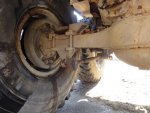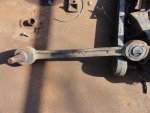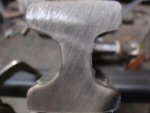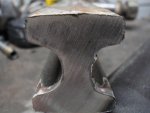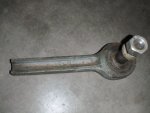crazywelder72
New member
- 701
- 2
- 0
- Location
- Winchester Ma
So after some thought and discussion about modifying the torsion bars, I think I need some advanced knowledge about metallurgy. I have been a welder for over 20 years working mostly in aerospace and medical equipment and have a lot of geeky knowledge but i don't know everything.
My existing dogbones are the round bar style and were cut in half, and spliced with a longer middle piece of pipe. I want to do similar the I-Beam style I have.
Anyhow, The I-beam style dogbones seem to be a type of cast iron.
I know when welding most cast iron a minimum of pre-heat and post heat is required. It also needs to be welded with Ni-Rod (welding rod high in Nickel). The slower the cooling process helps prevent thermal shock and crystallization of the metal causing cracks and brittleness. Usually when i weld cast iron I place the part in a bucket of sand and cover it with sand.
can anyone provide any more information about this?
My existing dogbones are the round bar style and were cut in half, and spliced with a longer middle piece of pipe. I want to do similar the I-Beam style I have.
Anyhow, The I-beam style dogbones seem to be a type of cast iron.
I know when welding most cast iron a minimum of pre-heat and post heat is required. It also needs to be welded with Ni-Rod (welding rod high in Nickel). The slower the cooling process helps prevent thermal shock and crystallization of the metal causing cracks and brittleness. Usually when i weld cast iron I place the part in a bucket of sand and cover it with sand.
can anyone provide any more information about this?
Attachments
-
68.5 KB Views: 84
-
81.3 KB Views: 68


